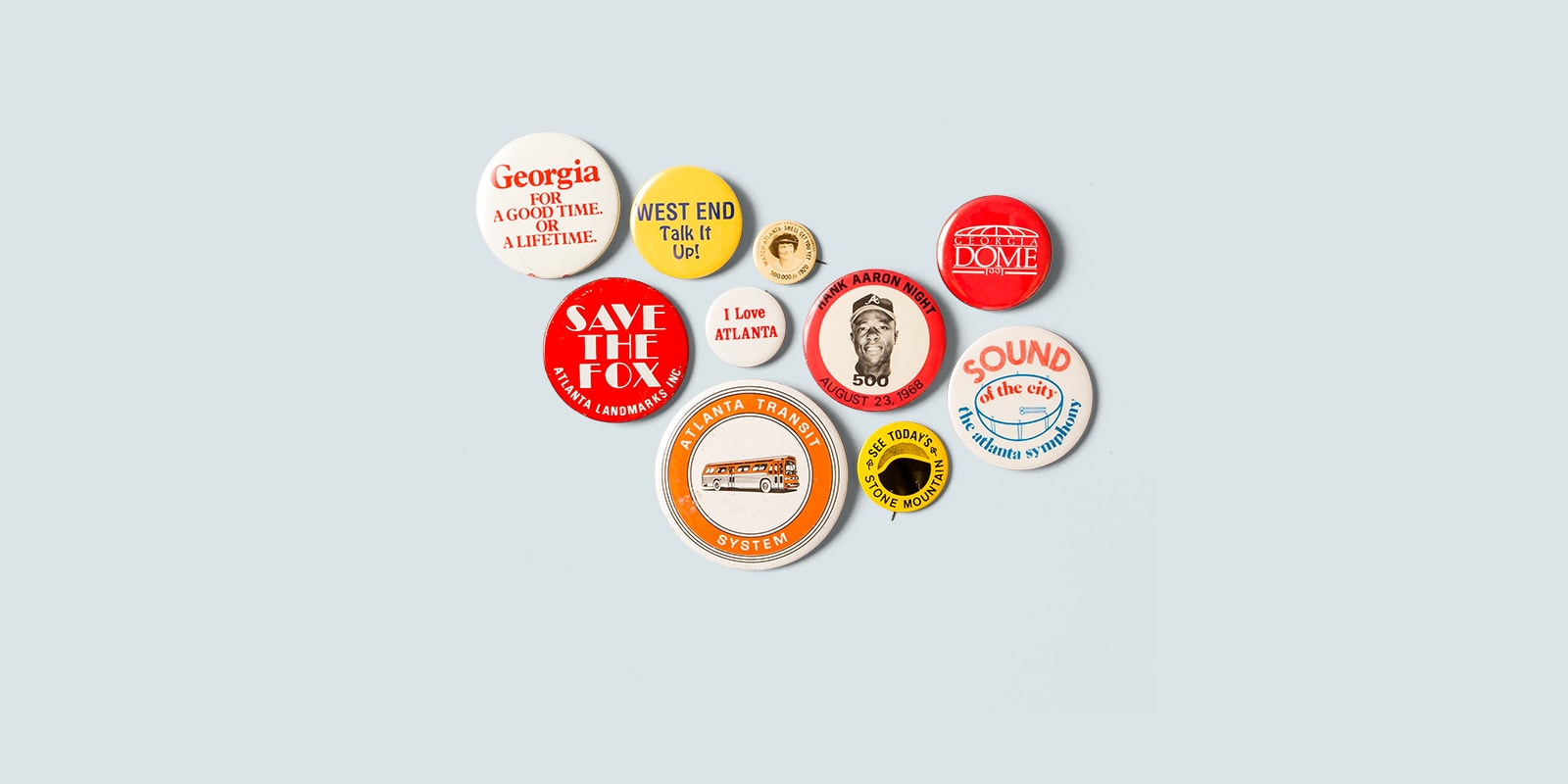Atlanta in 50 Objects
A pink pig and a renegade cow. A movie prop and a Coke bottle. A Pulitzer Prize–winning book and a Nobel Prize–winning icon.
How do you tell the story of Atlanta in 50 objects? We decided the best experts were Atlantans themselves—residents who cheer the Braves and rue I–285 rush-hour traffic, who understand how Civil War losses and Civil Rights victories together helped forge the city’s unique identity. Atlanta History Center asked the public to submit what objects they think best represent their town. The parameters were broad: an object could also be a person, a place, an institution, or an idea. After receiving hundreds of submissions, History Center staff assembled a collection of fifty pieces that represent the themes identified by the public. In addition to items from our own collections, we have partnered with many local institutions and individuals to gather artifacts from around the city to tell this community–driven story.


Traffic
Traffic congestion in Atlanta manifested itself early in the city’s history as pedestrians, horse-drawn vehicles, and electric streetcars moved sluggishly amid many at-grade railroad crossings.
Atlanta’s population of nearly 90,000 in 1900 tripled by 1930 and automobiles filled the streets. An early remedy included the construction of downtown bridges and viaducts over the downtown rail lines beginning in the 1920s.
As the city’s population escalated in the mid–twentieth century, so did traffic challenges. As the number of suburban residents grew, the Georgia Department of Transportation responded by improving Atlanta’s four interstate highways.
Today, Atlanta’s traffic congestion is rated among the worst in the nation. Some efforts to ease the gridlock include widened roads, synchronizing traffic lights, as well as designating HOV and express toll lanes. Counties now pass their own Special Purpose Local Option Sales Taxes (SPLOST) to expedite local road improvements.
“Our traffic situation is an unanticipated result of how well we’ve done,” says Sam Williams, former president of the Metro Atlanta Chamber. Today, with the metropolitan area spanning twenty–eight counties, regional long-term transportation planning is the key to solving Atlanta’s traffic woes.
Header Image: Traffic on the downtown connector, ca. 1973. Kenan Research Center, Boyd Lewis Photographs